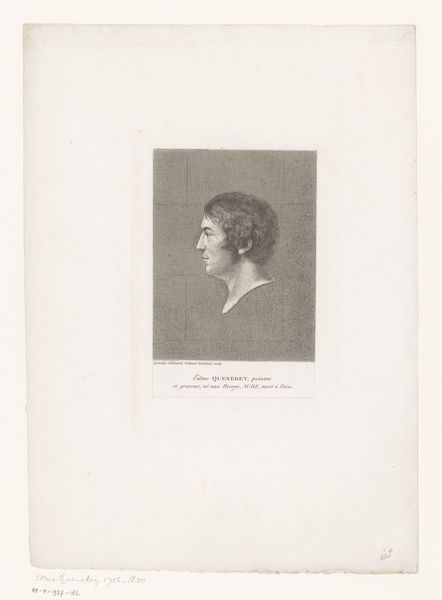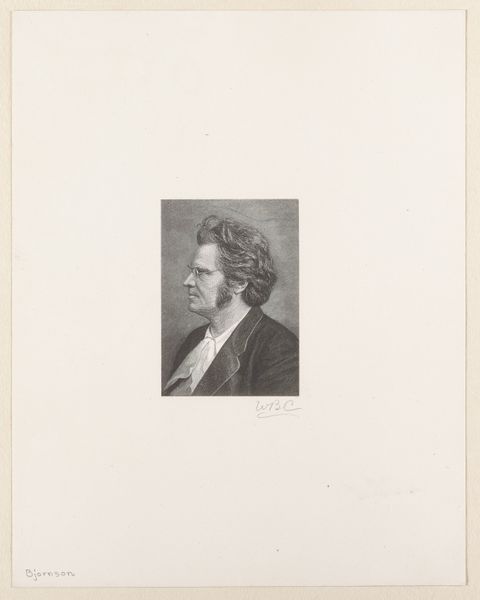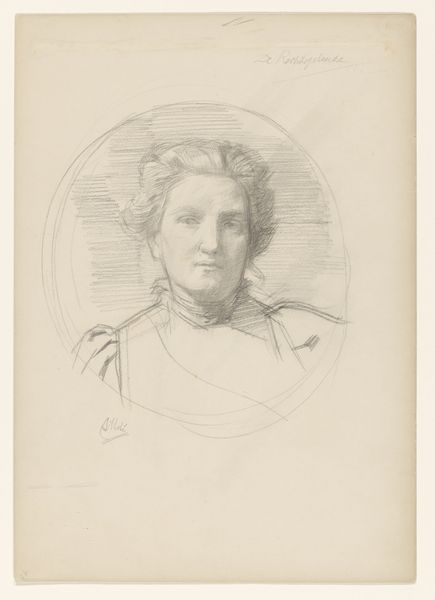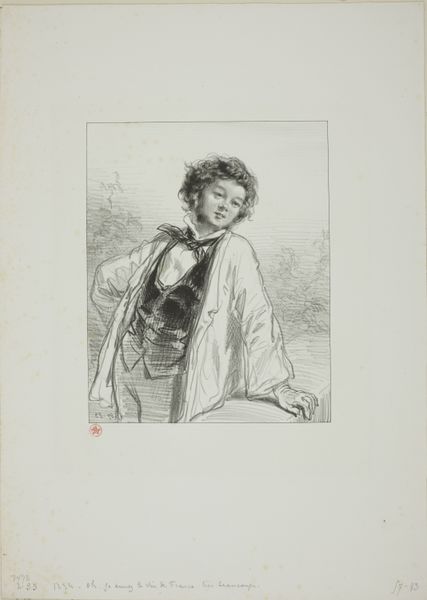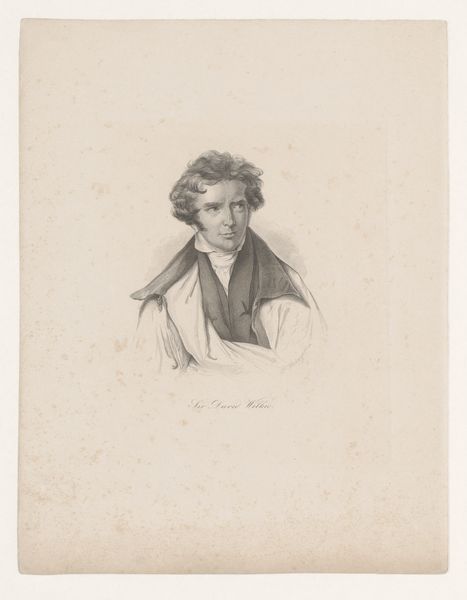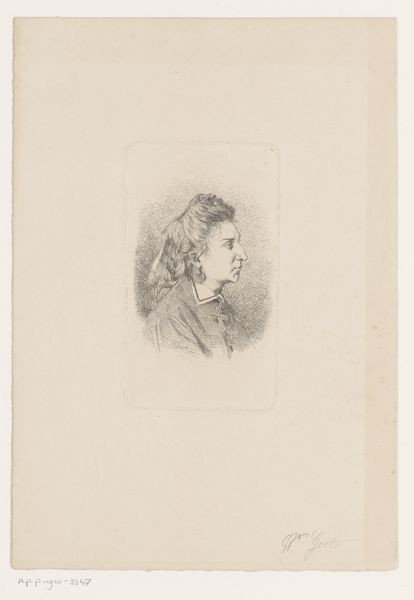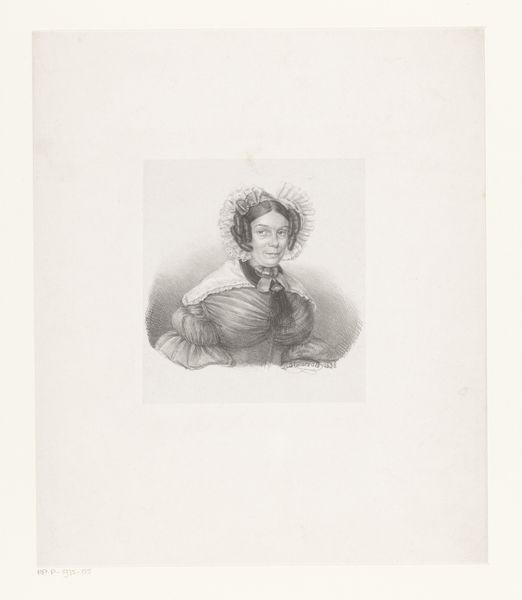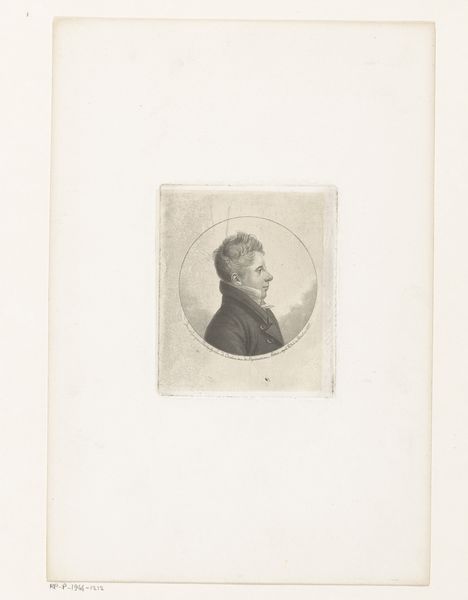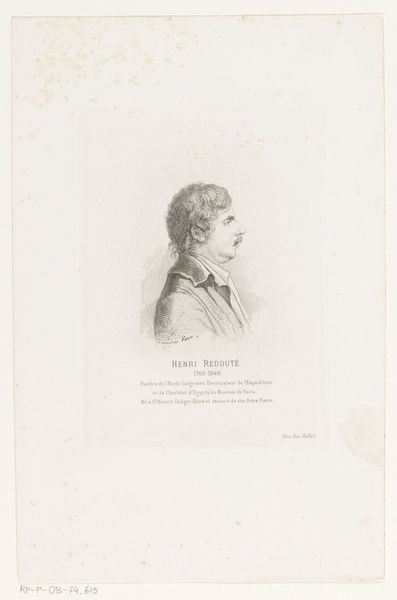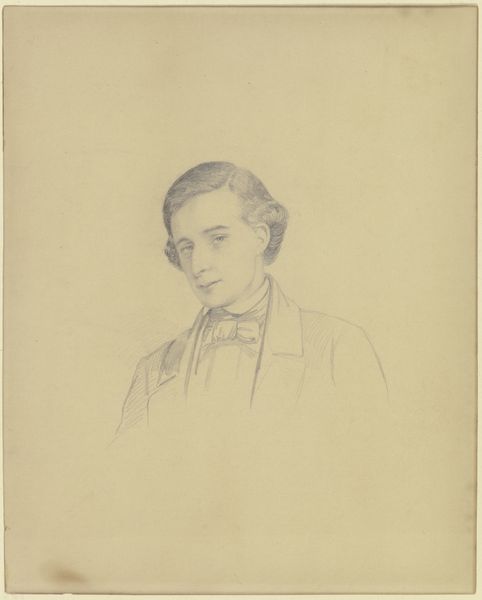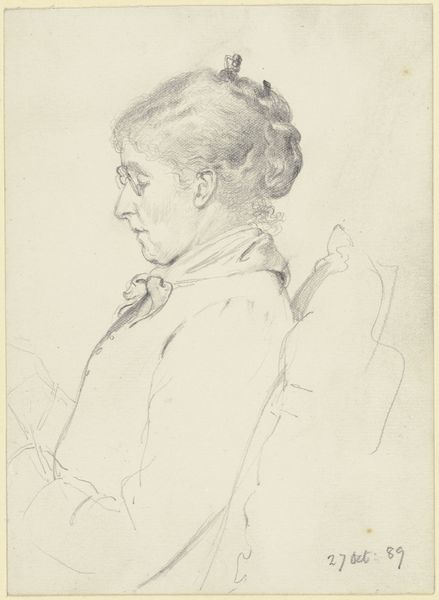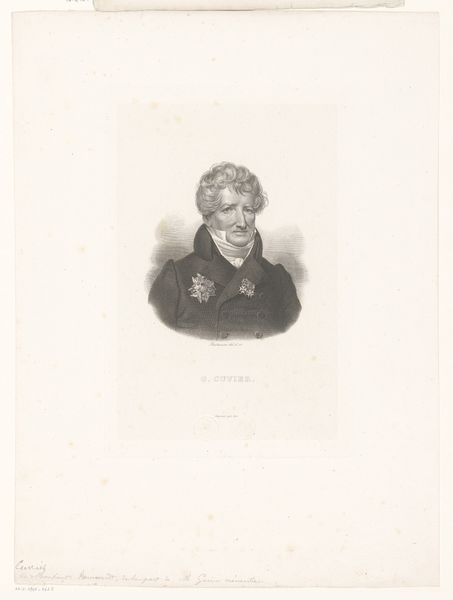
drawing, pencil
#
portrait
#
pencil drawn
#
drawing
#
pencil drawing
#
pencil
#
portrait drawing
#
academic-art
#
realism
Dimensions: height 395 mm, width 286 mm
Copyright: Rijks Museum: Open Domain
Editor: This is "Portret van Luigi Calametta aan het werk" a pencil drawing made in 1858 by David Joseph Desvachez. It's a delicate and detailed portrait, but seems almost unfinished. What catches your eye when you look at this? Curator: What strikes me is how this drawing highlights the social role of the artist in the mid-19th century. Here, Luigi Calametta is not just presented as a man, but as a working artist, carefully positioned with his tools. Do you notice the self-awareness in his gaze, almost as if he's performing the act of being an artist? Editor: Yes, there’s a formality to it, despite the medium being 'just' pencil. It's interesting to think about the performative aspect. Curator: Exactly. Consider the institutions of art at the time. Academies and salons dictated taste, and artists like Calametta were acutely aware of their position within this structure. Desvachez, in portraying him this way, comments on this relationship. Editor: So, it's not just a portrait, but a statement about the artistic profession? Curator: Precisely. Think about who would commission or purchase such a work. Likely other artists or patrons invested in the romanticized ideal of the working artist. The drawing itself becomes part of the artistic ecosystem, reinforcing the values and hierarchies of the time. Editor: That’s a great perspective. I hadn’t considered the art world itself being a subject of the piece. Curator: The pencil drawing makes it quite approachable in a way, yet the pose and the gaze remind us of the more profound connections art always have to power. Hopefully, this helps broaden the understanding of 19th-century portraiture beyond mere representation. Editor: Definitely, I learned to consider this beyond just its aesthetic qualities. Thank you!
Comments
No comments
Be the first to comment and join the conversation on the ultimate creative platform.
